Sourdough Rye Crispbread – Rye Knäckebröd
Paper thin, crackly, crunchy Sourdough Rye Crispbread is a healthy and savory snack – and the perfect accompaniment to soup or stew.
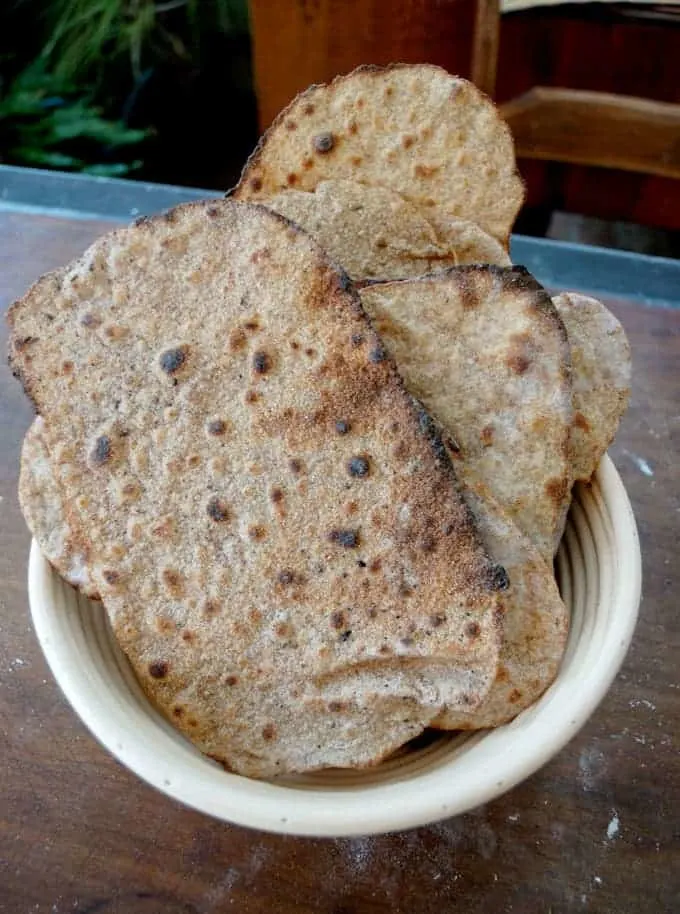
So, I’ve been on a bit of a “crispbread” kick for the past couple of weeks. While researching recipes for my recent Oatmeal Crispbread post I ran across so many intriguing recipes that I couldn’t limit myself to just one post.
After some experimentation I had two working recipes for crispbread. One version had buttermilk and a little butter in the dough and was more cracker-like in texture. That recipe ended up as the Oatmeal Crispbread.
The other recipe was based on a lean bread dough recipe, which I adapted with my sourdough starter and rye flour to create Sourdough Rye Crispbread.
If you don’t have one, check out my post to learn How to Make a Sourdough Starter. Then check out my system to Feed and Maintain Sourdough Starter.
Scroll through the step-by-step photos for making Sourdough Rye Crispbread:
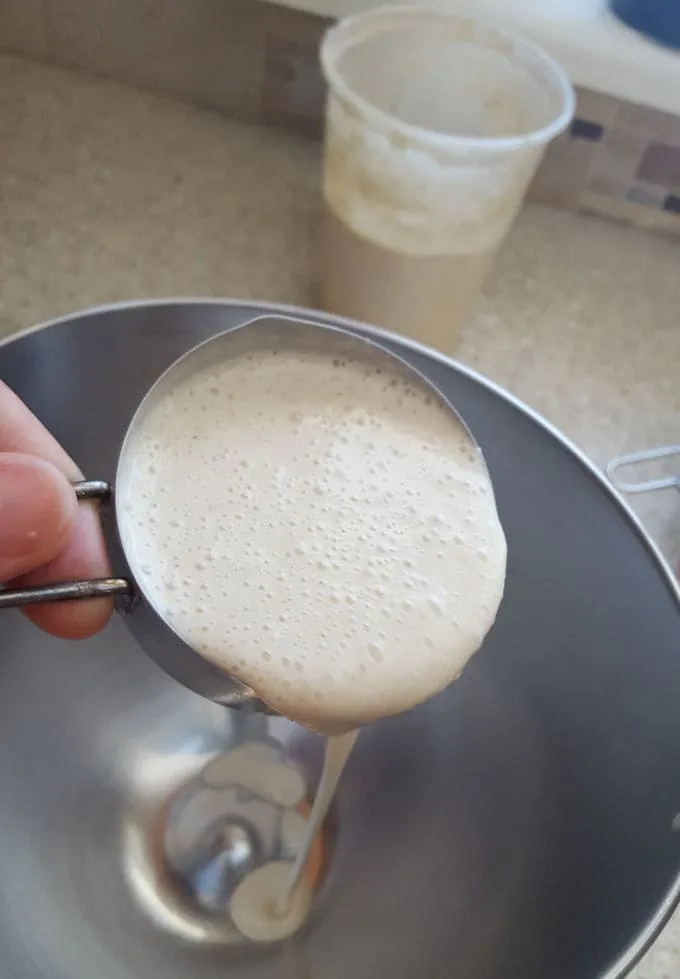
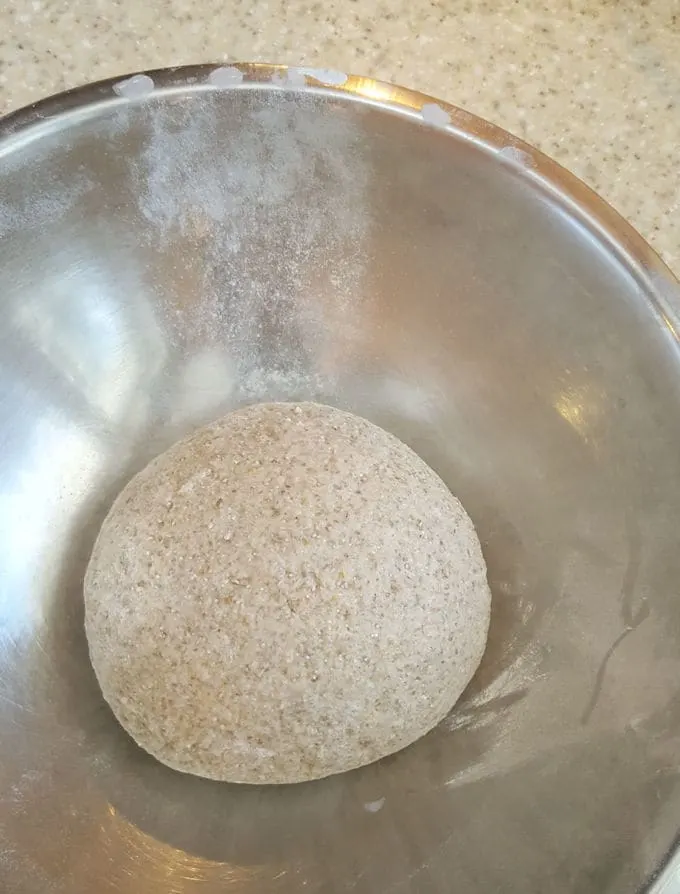
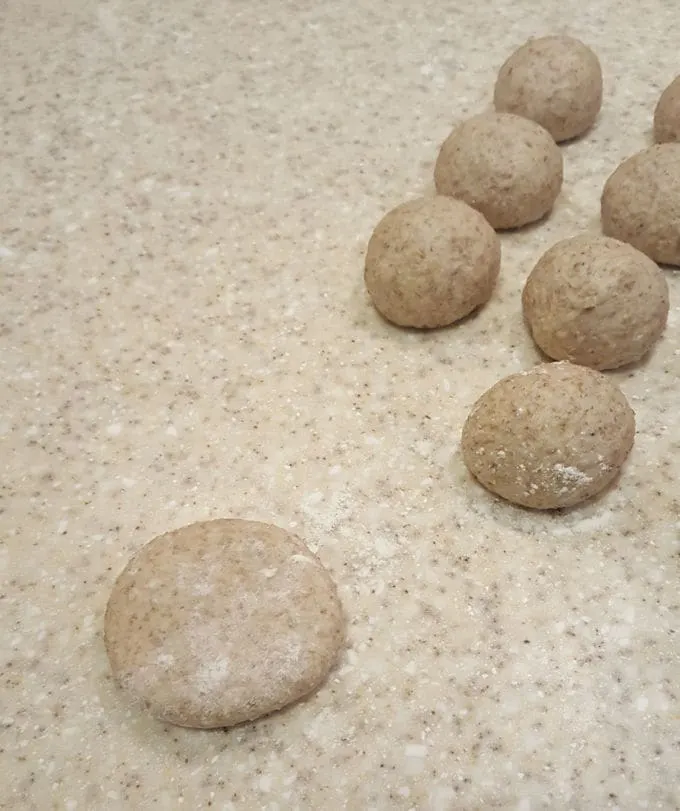
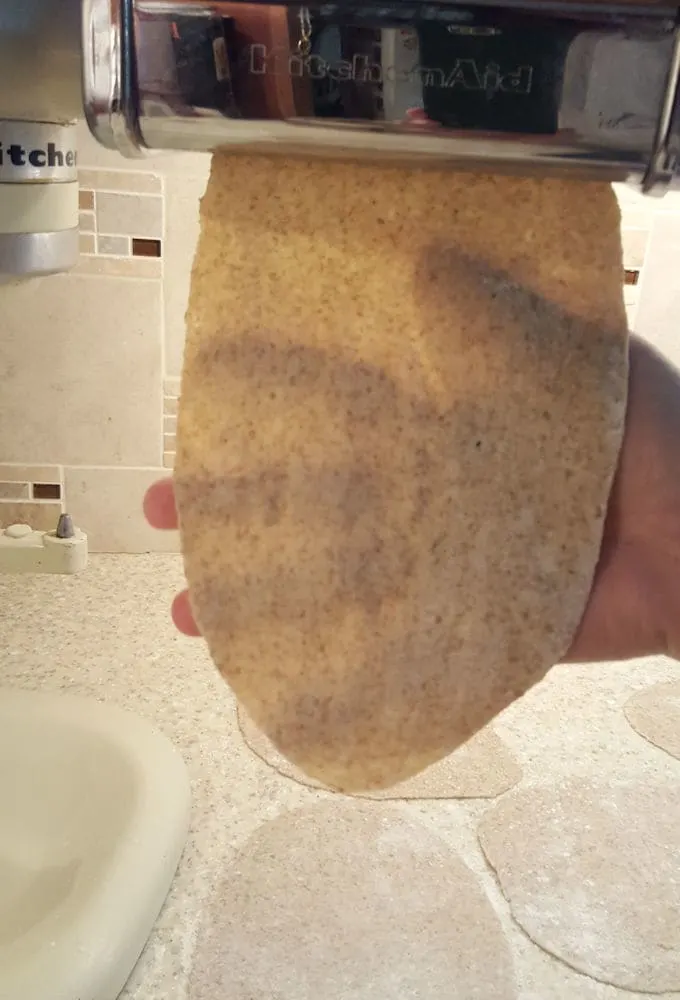
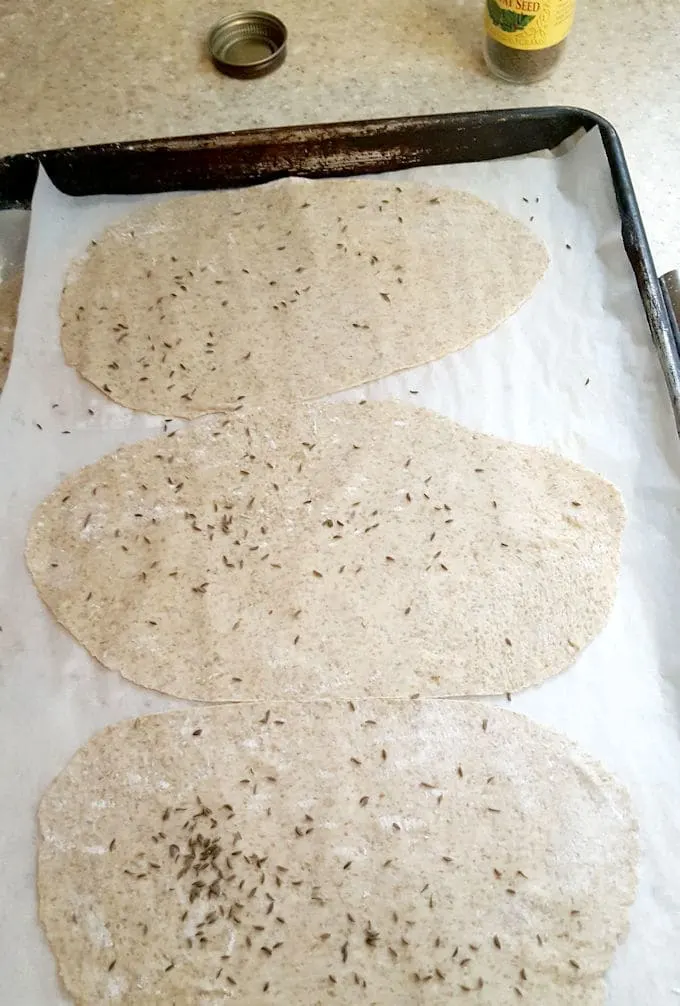
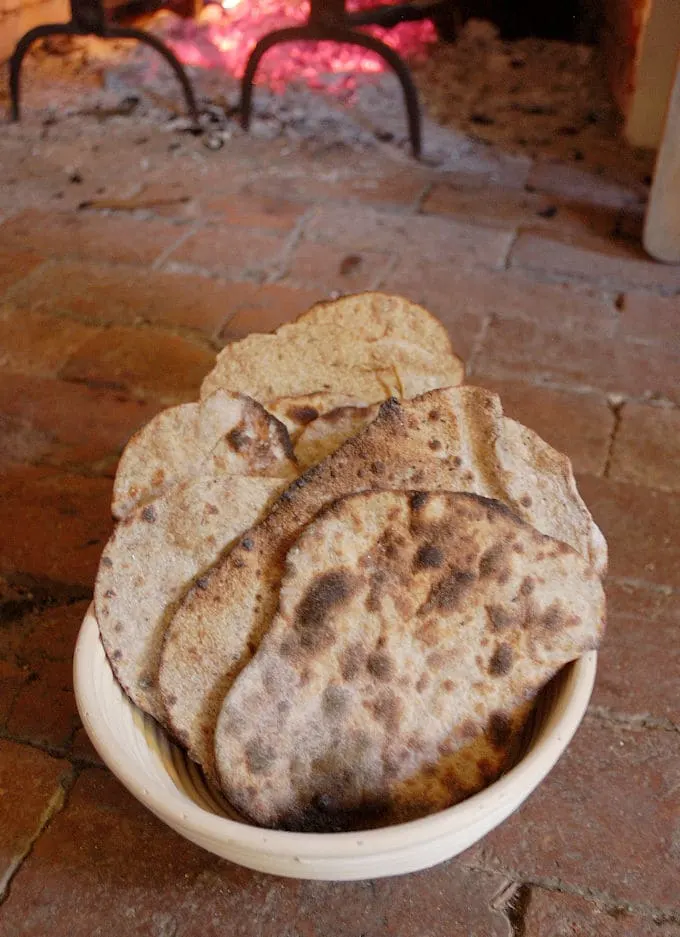
A few quick tips for making Sourdough Rye Crispbreads:
- Make sure your starter is active before mixing the dough.
- It takes about 4 half sheet pans to hold all the crispbreads. If you don’t have 4 pans you can work in batches. Roll all the crispbread and layer them between sheets of parchment to keep them from drying out.
- As each batch is baked remove the baked crackers to a cooling rack then slide another parchment with dough rounds onto the pan to bake.
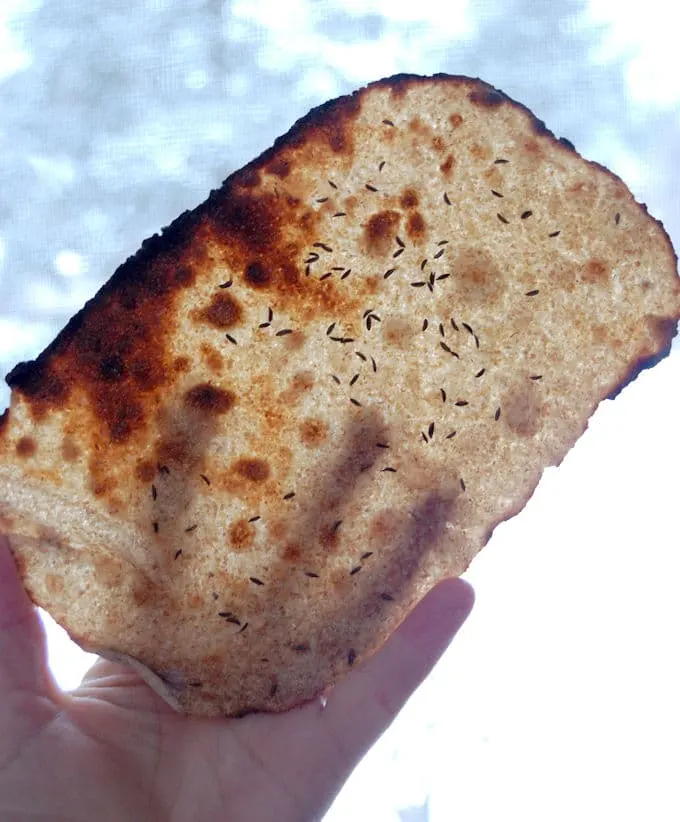
I know you hate to throw away that sourdough discard. Check out these recipes that use sourdough discard.
You might also enjoy these crisp and crunchy Sourdough Whole Wheat Crackers.
If you love this recipe as much as I do, I’d appreciate a 5-star review.
Sourdough Rye Crispbread Recipe
Ingredients
- 4 oz active sourdough starter (½ cup, 100% hydration)
- 6 oz warm water (¾ cup)
- 1 ½ teaspoons table salt
- 1 ½ oz honey (2 tablespoons)
- 5 oz bread flour (1 cup, see note)
- 5 oz rye flour (1 cup)
Instructions
- In a large mixer bowl, combine 4 oz active sourdough starter, 6 oz warm water, 1 ½ teaspoons table salt and 1 ½ oz honey. Add 5 oz bread flour and mix to form a smooth batter. If using a stand mixer, switch to the dough hook and add 5 oz rye flour all at once and mix until the dough gathers on the hook. If mixing by hand add as much of the flour as you can with a spoon or spatula, then turn out onto a floured work surface and finish adding the flour by hand.
- Turn the dough out onto a floured surface and knead until the dough comes together. Set the dough into a lightly oiled bowl, turning once to coat the dough, cover and allow it to sit at room temperature for 3-4 hours. Every hour turn the dough out and knead 1-2x, return to the bowl and cover again. At this point you can refrigerate the dough overnight and finish the next day
- Preheat the oven to 400 °F. (If you have a baking stone preheat it to 450 °F for at least an hour). Line up to 4 half sheet pans with parchment paper (see note 2).
- Divide the dough into 16 pieces. Shape each piece into a ball and let rest 4 to 5 minutes on a floured surface. Flatten each ball into a disc. If you have a pasta roller use that to roll the dough (I rolled to #5 thickness).
- If rolling by hand roll each dough portion to 1/16" thick, the thinner the dough the crisper the bread. Sprinkle the crackers with caraway seeds and pat them into the surface.
- Place the dough rounds onto the parchment lined baking sheets or is you're using a baking stone you can bake the breads in batches, as many as can fit on the stone at a time.
- Bake about 5 10 minutes until golden brown and crisp. They'll bake faster on the baking stone than on a sheet pan.
Would you like to save this recipe?
As an Amazon Associate and member of other affiliate programs, I earn from qualifying purchases.

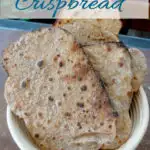
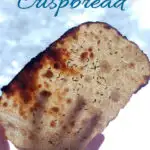
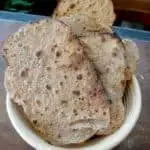




I like the idea of the recipe, the biggest issue I have is there are no dimensions given for each finished piece (if I had been flipping between the directions and the illustrations I would not have rolled them as thin as I did). The #5 setting on my KA pasta roller is much thinner than yours.
Flour amounts seem a bit light, my starter is very close to 100% hydration, if anything it tends to be on the dry side. It took additional bread flour to get the dough hook to pick up the dough. The additional flour may be the reason the salt seems to be on the light side, I’m not a big salt user but do think these need a bit more.
I used silpat on pizza stones and would dock the crackers the next time.
I’d like to try this recipe using a rye starter discard. In this regard, I am wondering what is the point of adding an active starter (i.e.. active yeast), kneading and proofing if the goal is to make a cracker,?
Even though a cracker is thin, you still want to have some rise in the dough. If you look at the final photos of the finished crackers you can see the bubbles and irregularity in the crackers. That comes from the CO2 in the dough released by the active yeast in the starter. Without that the crackers would be very dense. You want thin, crisp and light crackers. You can use a discard, but you’ll have to give it a feeding ahead of time to get it activated before mixing the dough.
I love these crackers, but I have one question. Should the flours be measured by weight or by volume? 112g of bread flour and rye flour have a different volume and I find the cup reference a bit confusing.
Oops, I just realized it was 154g each, but my question remains the same. Thank you!
I list the ingredients by volume, ounces and grams so you can measure the ingredient any of three ways. Weight is always the most accurate, but I list volume because some folks don’t have a kitchen scale and measure by volume. I list both ounces and grams because Americans tend to use ounces and most other countries use grams. I did actually update the weights on the flours to use my correct conversion. Bread flour and rye flour both weight 5 oz per cup, using the “dip and sweep” method. If you fluff up the flour in the bin and then spoon it into the cup it will probably weigh less. That’s why it’s more accurate to weigh your ingredients because how you fill the cup can change the weight of the ingredient.
I make this using my sourdough discard and load it with lots of different seeds. Very healthy.
I really enjoyed this recipe! I used sesame seeds and it was delicious.
I have been trying to avoid plastic and since crisp bread is wrapped in plastic – here I am .
Thank you again for sharing the really good recipe!
Thanks. I’m glad you liked it.
Ahh this looks amazing! Can’t beat freshly baked bread!
Yum, love this recipe!
Thanks, Erin!
@Eileen Gray, I know this is a common “issue” for me, but maybe you can help me understand. I make sourdough products for the benefit of the sourdough itself. So when a recipe says sourdough, but the added flour isn’t soured “long enough,” then, to me, it isn’t truly sourdough. I guess I have to add that I thought it needed to sour at least 7 hours??? Thanks